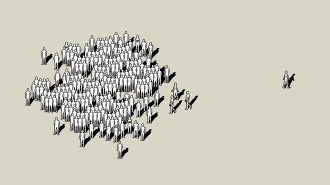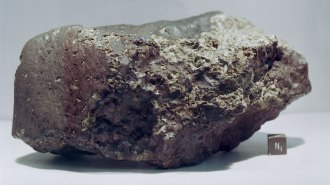Search Results
Counting Earth’s tree species
Students will answer questions about the online Science News article “Earth may have 9,200 more tree species than previously thought,” which describes researchers’ efforts to estimate the number of tree species on Earth. A version of the article, “Earth may be hiding thousands of tree species,” appears in the March 12, 2022 issue of Science News

- Educator Guide:Educator Guide
- Topic:Science & Society
- Category:Data Analysis
- Category:Research & Design
Look to the Outliers
In this guide, students will learn about outliers and why some social scientists study them in an effort to improve people’s lives.
Defying expectations
Students will answer questions about the online Science News article “Why do some people succeed when others fail? Outliers provide clues,” which describes how research into communities that defy expectations can reveal ways to help others.
All about outliers
Students will define what an outlier is and discuss why outliers occur, how to identify them and how they can be useful for science and society.
The physics of flying seeds
Students will design and build models inspired by flying seeds with the goal of making the models travel as far as possible. Students will test the models, analyze which ones performed the best and explain why those models performed well using physics principles.

Meteorite’s Organics Aren’t Signs of Life
In this guide, students will learn about the origin of organic material found inside a meteorite from Mars and discuss how new evidence can be used to reevaluate scientific claims.
Evaluating scientific claims with new evidence
Students will compare two Science News articles and analyze how new evidence has revised an initial claim and the reasoning behind that claim. As a bonus, students can answer chemistry questions about abiotic and biotic reactions.

Chemistry that’s out of this world
Students will answer questions about the online Science News article “Organic molecules in an ancient Mars meteorite formed via geology, not alien life,” which describes new research into the origin of organic material found in a space rock. A version of the article, “Meteorite’s organics aren’t signs of life,” appears in the February 12, 2022 issue of Science News.
Examining bias through fossils
Students will learn about early evidence for human evolution, discuss how interpretations of data can be influenced by scientists’ biases and develop a framework for analyzing the physical features of hominin fossils.

Mental Gymnastics
In this guide, students will learn about psychological tools that are helping elite athletes in competitions and everyday life, analyze data visualizations and discuss how the psychological tools might be applied to students' own lives.
Grappling with graphs and other data visualizations
Students will discuss the uses of data visualizations, analyze visualizations from a Science News article, and think about how psychological tools used by elite athletes might benefit their own lives.
Being mindful of mental health
Students will answer questions about the online Science News article “How mindfulness-based training can give elite athletes a mental edge,” which explores new research into psychological tools to improve mental health. A version of the article, “Mental gymnastics,” appears in the January 29, 2022 issue of Science News.